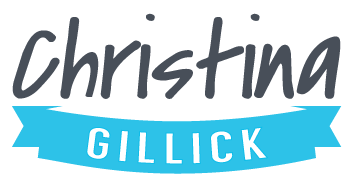 Last year, I went to a workshop where I learned how to write a book quickly, with the goal of increasing my expert status in my niche.
Last year, I went to a workshop where I learned how to write a book quickly, with the goal of increasing my expert status in my niche.
The book I’m planning to write will be about marketing to potential customers in the self-help niche. It will be like a giant business card for my copywriting business, giving me immediate credibility.
Plus, I will have clients coming to me because they will see or read my book and know that I’m an expert. Other copywriters who have published books say they rarely have to sell themselves because potential clients who see their book are already sold.
It’s a great plan, but I still haven’t followed the advice in the workshop to finish my book (although I’ve set a goal of finishing the book this year). It’s a shame, too, because the plan is quite quick and easy to follow … and from what I’ve seen, very effective.
So I’d like to share a specific strategy from that workshop that allows you to finish an entire well-thought-out and professional book in a surprisingly short period of time. Let’s both plan to finish our first books this year to showcase our expert status to the world.
Here are some tips from the workshop I’m using as I write my book. Let these strategies be your guide as well. (By the way, a lot of this advice comes in handy for any type of writing project.)
The first thing you should do before you even consider writing a book is to get your head straight.
You have to build up your belief in yourself. You have to believe that you can write and that you can be an expert in your field.
Learn to recognize negative thoughts and actions and replace them with positive ones.
If you think, “I’m not an expert,” immediately stop and say, “I am an expert. I have the knowledge and training I need to position myself as an expert, and I know more about my topic than the average person.”
If you’re having trouble believing you can be an expert, read this article I wrote on just how easy it is to claim your expert status.
Another example of a negative belief is, “I don’t have time,” or “This is a waste of time.” Replace those thoughts with, “I have plenty of time to do what I want to do. If I want to write a book, I need to spend one less hour each day doing something frivolous and instead spend that time writing.”
Or maybe you think, “I don’t have the knowledge to write a book.” Replace that with, “I do have the knowledge, and what I lack, I can make up in research and interviews.” Many articles and books have been nothing more than interviews or other people’s stories.
The next step to writing a book is to weigh your passion and experience to come up with the topic. Also, you want to tie it into your niche so you can gain credibility as an expert.
A great way to do this is to take out a piece of paper and draw a line down the middle to make two columns.
On one side, title it “What am I passionate about?” and the other “What am I good at doing?”
Put at least 10 answers into each column and see which ones match up.
When you have a topic on the passion side and one on the knowledge side that overlap, you’ve found the subject for your project.
Then try to tweak the topic to relate to your niche.
For example, I’m passionate about psychology, and I’m experienced with marketing. Because my niche is self-help, my book is going to be about marketing to the self-help niche and the psychology behind it.
My prospective clients who sell self-help products can use my book to increase their client base by understanding the psychology of people who want to improve and why they buy self-help products.
Now you can follow this outline to write it:
Step 1. Pre-Writing
Here, you outline everything you want to talk about and come up with ideas and stories you might share.
Within a week, you could have an entire rough draft outline of your book if you spend some time each day.
On day one, make an outline of your entire book, or if you prefer, mind map it.
On day two, use your outline to make a rough draft of your entire table of contents including chapters and sub-chapters.
On day three, add a few sentences to each section of your table of contents.
On day four, take a tactic used by Zig Zigler to build credibility and add ideas for two stories to each point you want to make. This also entertains the reader and gives you more to talk about.
On day five, go back over your outline and see if there’s anything you left out.
Also, look at some other books on your topic and see what they cover. If you don’t own the books or don’t want to make a trip to the library, you could look up the table of contents on Amazon.
On day six, fix the flow of your outline. Make sure it all makes sense and moves from point to point with ease. If you need to move a point to another chapter or swap chapter 3 for 5, this is the time to do it.
On day seven, rest.
Step 2. Drafting
During drafting, avoid revisions and editing. Instead, just get everything written down or typed.
This isn’t about formatting, spelling, grammar, or writing properly. This is a brain dump! Get it all out and get it out fast so you don’t lose anything.
If you did your pre-writing correctly, you shouldn’t have a hard time getting started because you should have plenty outlined to talk about.
But if you’re freezing up, tell yourself you can always edit later – and you will. For now, you have to get something on paper – even if you think it’s horrible.
You can start slowly by adding a few sentences to each chapter. Then add a few more. Keep adding a few sentences until your table of contents grows into your entire book.
Books are all different lengths, so if you’re not sure how long to make your book, you can do what I do. Choose a book that is about the same amount of pages you want your final book to be. Count the number of chapters, number of pages per chapter, and number of words per page. This will give you an idea of how long each chapter should be and how many chapters your book should have.
Step 3. Revision
In the revision step, you can finally go back and edit your work.
If you have parts that need to be moved, this is the time to do it. Reorganize your thoughts, add stories where you need them, and create new chapters if you need to.
Then do another round of revisions to clean, enhance, and polish it.
This process could take a while because you might want to go through several revisions to get it as good as possible.
Step 4. Proofreading and Editing
The instructor of the book-writing class said it would be very beneficial to hire out this process, and I agree.
Once you’re finished with the book, you’ll be so close to it that you probably won’t notice minor errors and typos.
Hiring a copyeditor will give you a set of fresh eyes to find things you missed and fix the quality of your book.
If you can’t afford to hire a professional copyeditor, at least have a few smart friends and family members look for problems like spelling and grammar and things that don’t quite flow.
You might also try to find a fellow writer who has a book he needs edited. You could trade books and do each other a favor.
Step 5. Publish Your Book!
Finally, your book is ready to be read by your audience!
Of course, you could try to find a publisher. But if your book is mainly for building your credibility, it will be easier and faster for you to self-publish your book or even publish it as a PDF e-book to get it into the hands of your readers.
So, what about you? Do you have plans to write a book this year? If so, what’s your topic? Comment below to join the discussion …


Trackbacks/Pingbacks